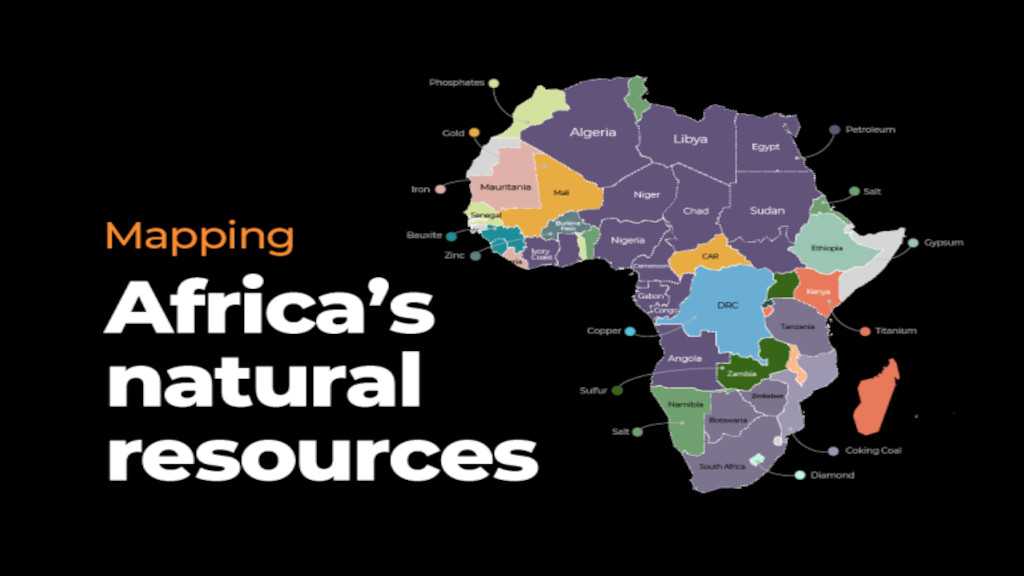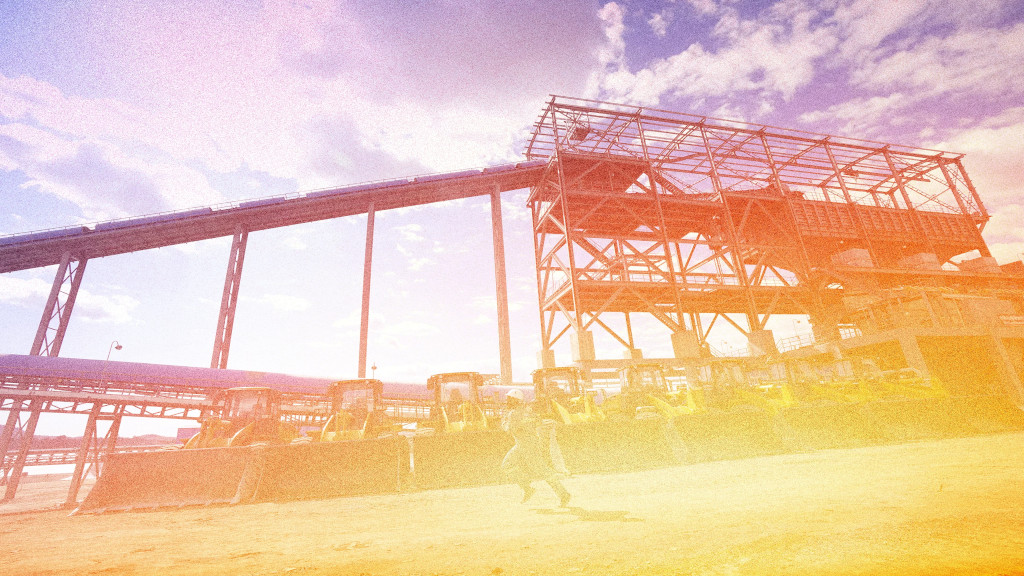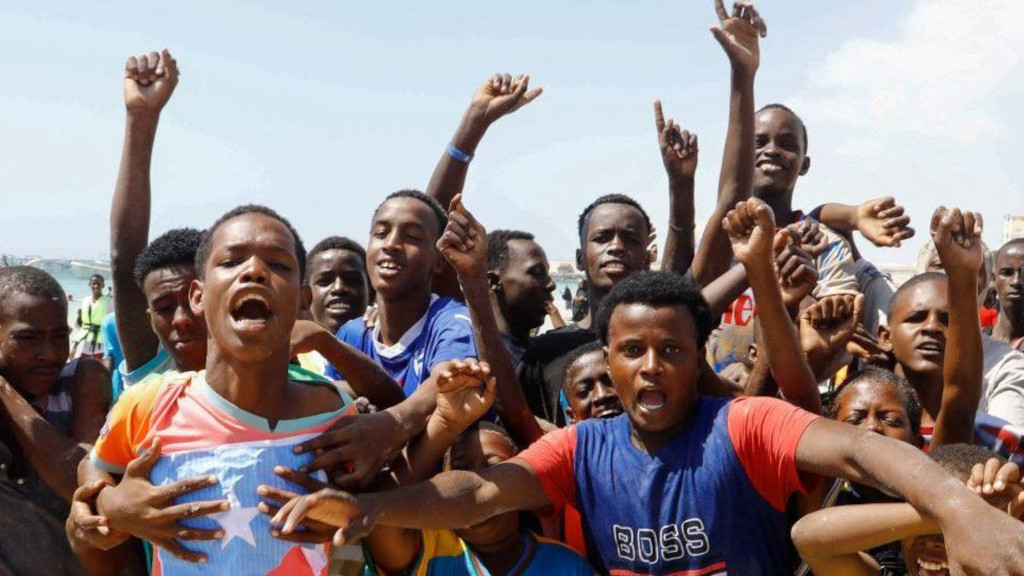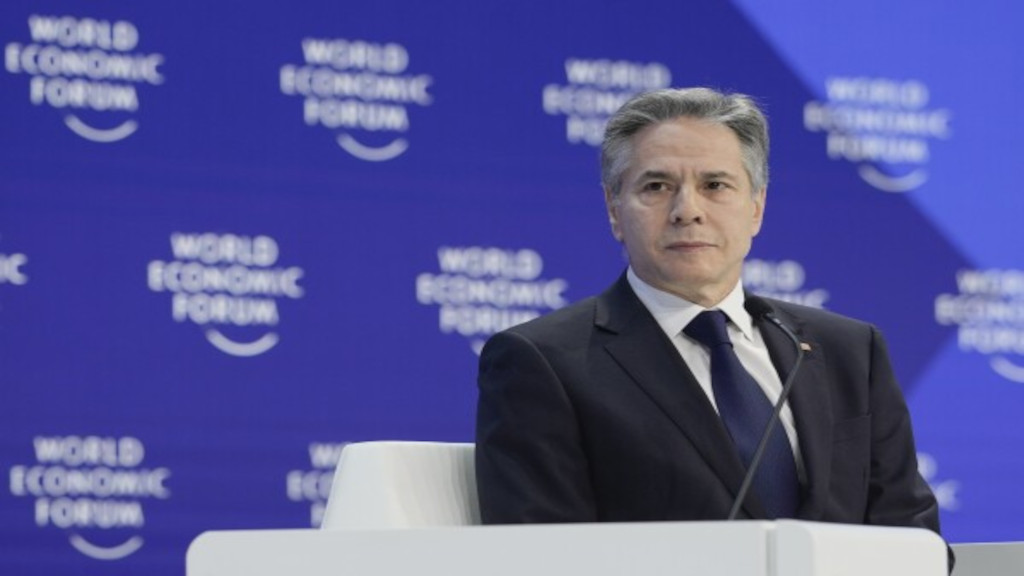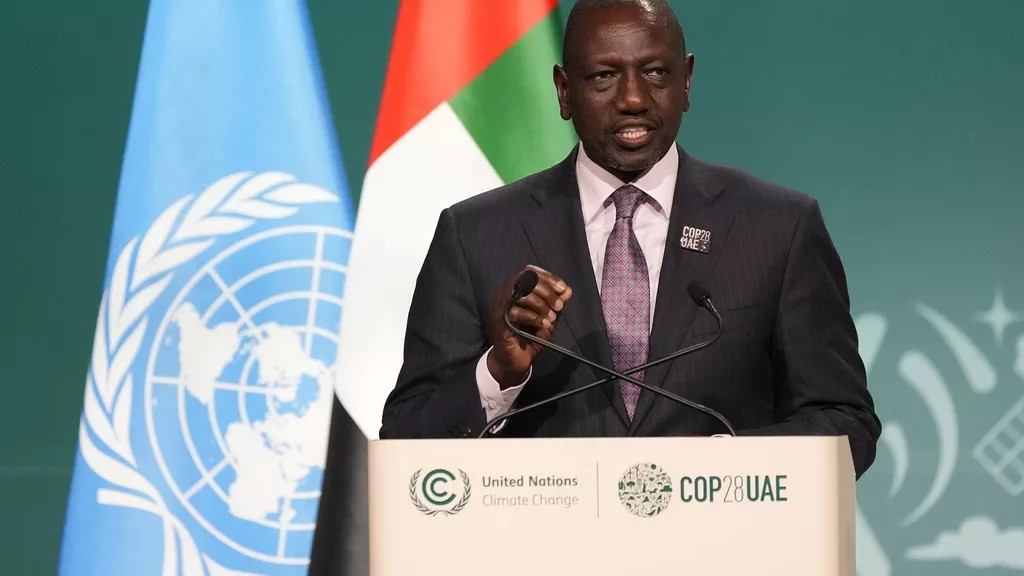Beneath the surface of Africa lies a wealth of mineral resources of enormous value. In 2019, the continent produced almost 1 billion tonnes of minerals worth $406bn.
According to the United Nations, Africa is home to about 30 percent of the world’s mineral reserves, 12 percent of the world’s oil and 8 percent of the world’s natural gas reserves.
The continent also holds 40 percent of the world’s gold and up to 90 percent of its chromium and platinum – both valuable metals.
A world of minerals in your mobile phone
Most of the electronics we use today are based on a number of minerals – from aluminium to zinc.
In 2021, some 1.5 billion smartphones were sold around the world – up from 122 million units in 2007. As of 2020, nearly four in five (78 percent) people own a smartphone.
More than half of a mobile phone’s components – including its electronics, display, battery and speakers – are made from mined and semi-processed materials.
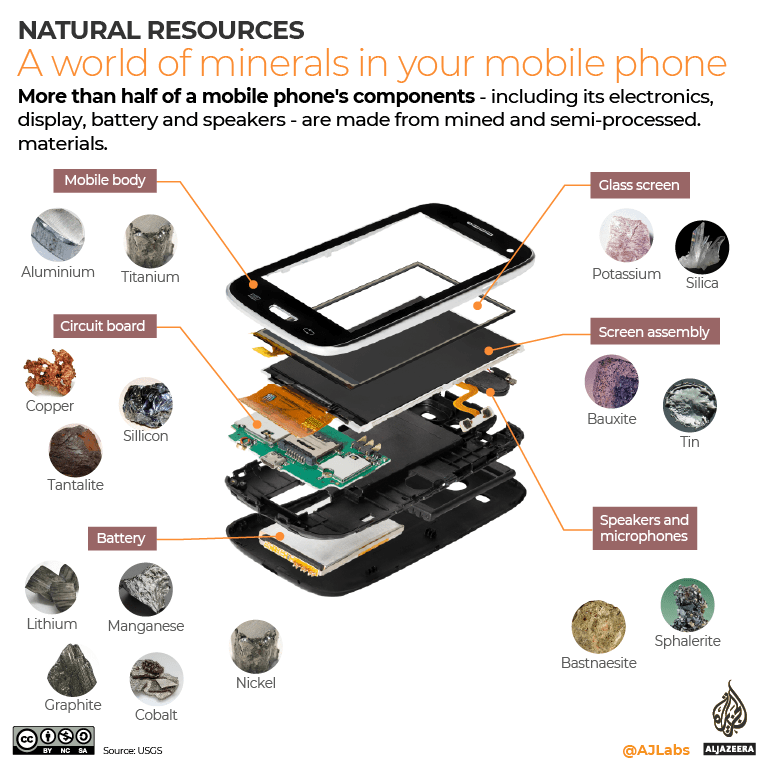
Lithium and cobalt are some of the key metals used to produce batteries. In 2019, about 63 percent of the world’s cobalt production came from the Democratic Republic of the Congo.
Tantalum is another metal used in electronic equipment. Tantalum capacitors are found in mobile phones, laptops and in a variety of automotive electronics. The DRC and Rwanda are the world’s largest producers of tantalum. Together they produce half of the world’s tantalum.
Top minerals per country
Petroleum and coal are among the most abundant minerals for 22 out of Africa’s 54 countries. As of 2019, Nigeria produced most of the continent’s petroleum (25 percent), followed by Angola (17 percent), and Algeria (16 percent).
Metals including gold, iron, titanium, zinc and copper are the top produced minerals for 11 countries. Ghana is the continent’s largest producer of gold, followed by South Africa and Mali.
Industrial minerals such as diamonds, gypsum, salt, sulphur and phosphates were the main commodity for 13 African countries. The DRC is Africa’s largest industrial diamond producer, followed by Botswana and South Africa. Botswana ranks number one in Africa for the production of gem-quality diamonds – used for jewellery.
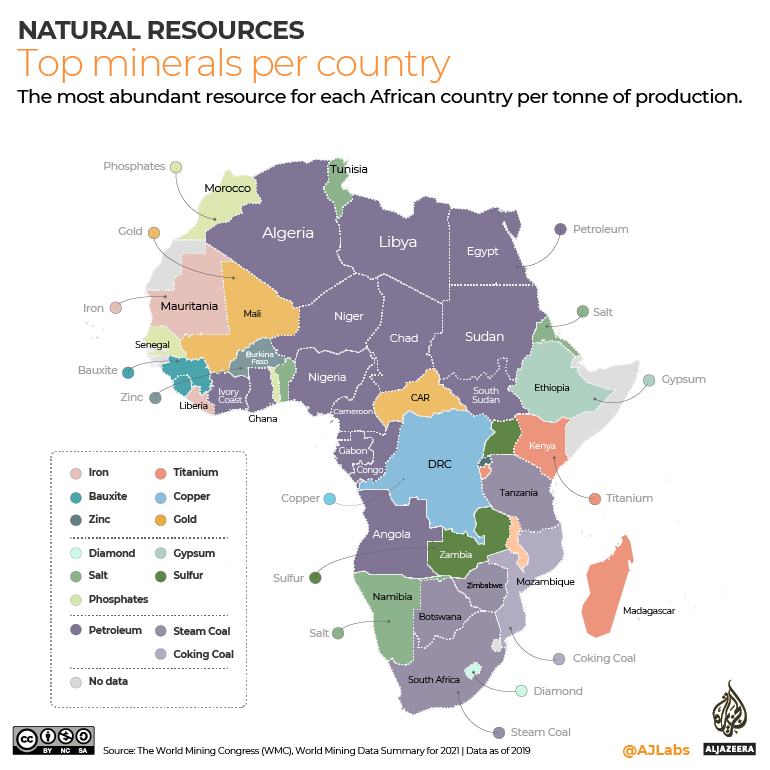
Mineral wealth
At $125bn per year, South Africa generates the most money from its mineral resources. Nigeria comes in second with $53bn per year, followed by Algeria ($39bn) Angola ($32bn) and Libya ($27bn).
These five countries produced more than two-thirds of the continent’s mineral wealth.
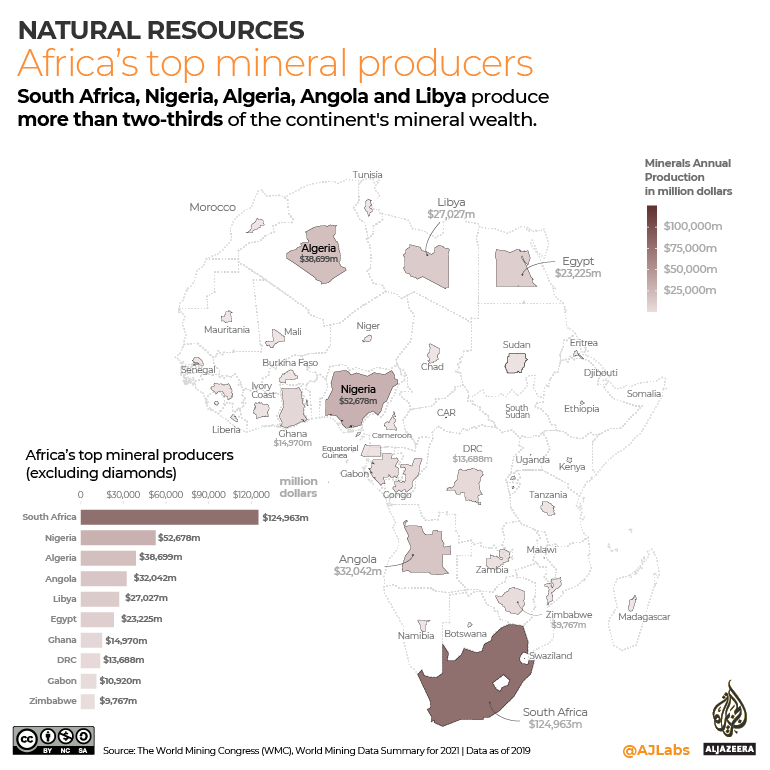
The world’s minerals
According to The World Mining Congress (pdf), the world extracted some 17.9 billion tonnes of minerals in 2019.
Asia was the largest producer, accounting for 59 percent of the world’s total production valued at $1.8 trillion. North America was second with 16 percent, followed by Europe at 7 percent.
Africa produced about 5.5 percent of the world’s minerals worth some $406bn.
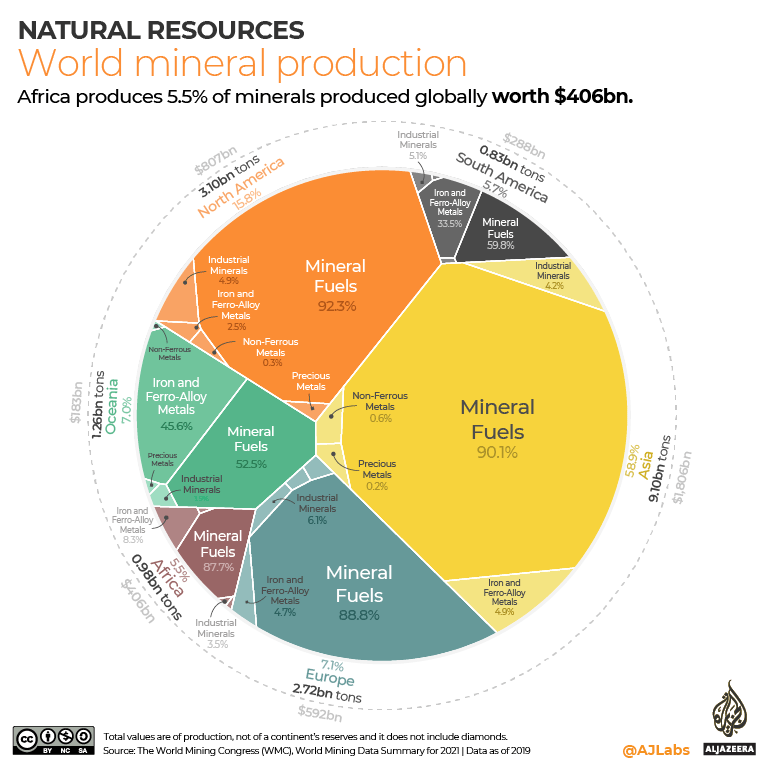
Source: Al Jazeera, 15th February 2022
 afric-Invest
afric-Invest